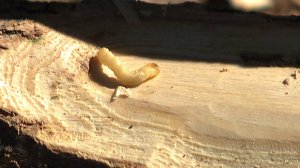LAKEWOOD, Colo. — In Front Range cities such as Lakewood, ash trees have awareness ribbons on them to remind citizens about the danger the Emerald Ash Borer poses for their ash trees.
“There have been millions of ash trees killed in the Midwest by the bugs,” said Keith Wood, state forester. “The dead wood from those trees were cut up and shipped as fire wood around the nation, some sent right here to Colorado.

That wood had larvae and borers inside it and now those bugs are infesting trees here.”
Boulder County has been hit hard, there is a ban on the wood being taken out of the county. This is the third major bug to hit Colorado trees, the Spruce and Mountain Beetles have hit pine trees hard, but with so many fires and the drought, many of those bugs are less of a threat than they were a few years back.
These are some things the state wants you to know about the newest threat to our trees.
Emerald Ash Borer: What Coloradans need to know
- Learn how to identify ash trees, and signs of EAB infestation in ash trees:
- thinning of leaves and upper branches and twigs
- serpentine tunnels produced by larvae under the bark
- D-shaped exit holes 1/8-inch wide
- new sprouts on the lower trunk or lower branches
- vertical splits in the bark
- increased woodpecker activity
- Multiple EAB management strategies exist for homeowners and communities, including monitoring trees for the early presence of the pest, removing and/or replacing ash trees, protecting trees with insecticides and planting new trees nearby in an effort to get them established before the arrival of EAB. The closer ash trees are to an area of known EAB infestation, the higher the risk that they will become infested.
- If hiring someone to apply pesticide treatments to protect ash trees, the applicator must be licensed by the Colorado Department of Agriculture as a Commercial Pesticide Applicator.
- Never transport firewood or other products from ash trees, as this is the most likely method of accidental spread. A quarantine is now in place in Boulder County and surrounding areas to try and prevent the human-assisted spread of EAB.
